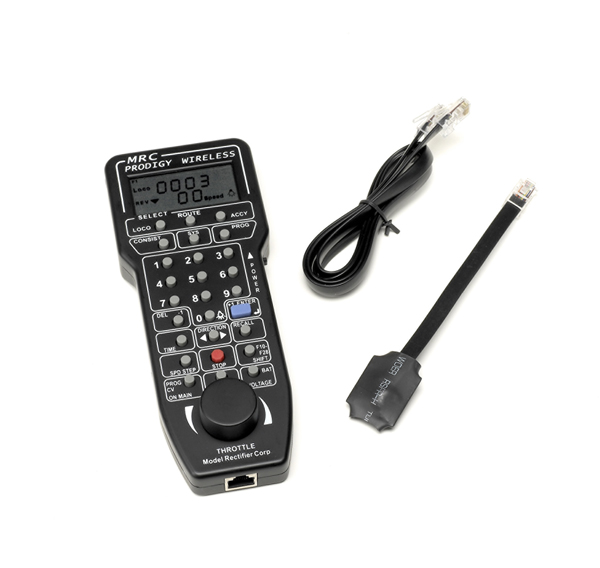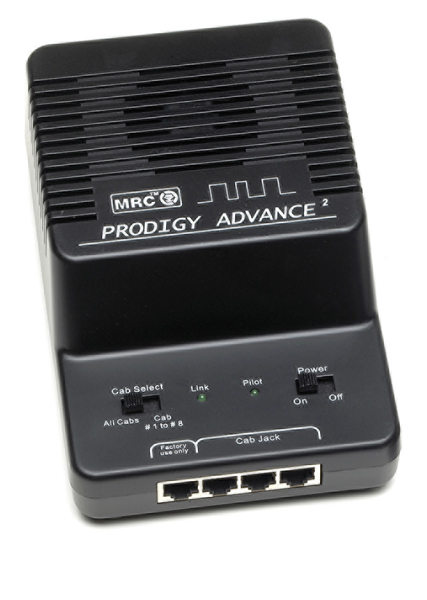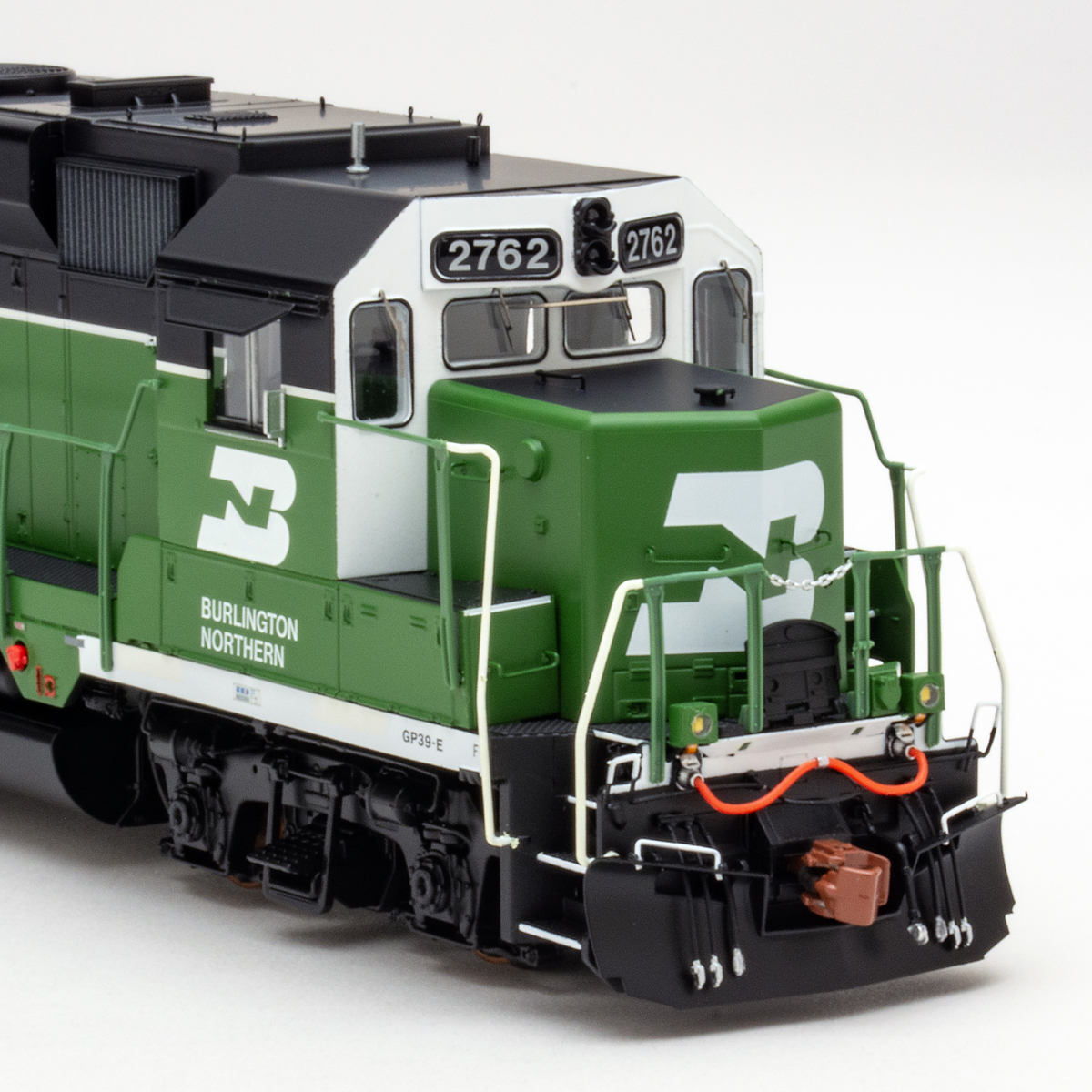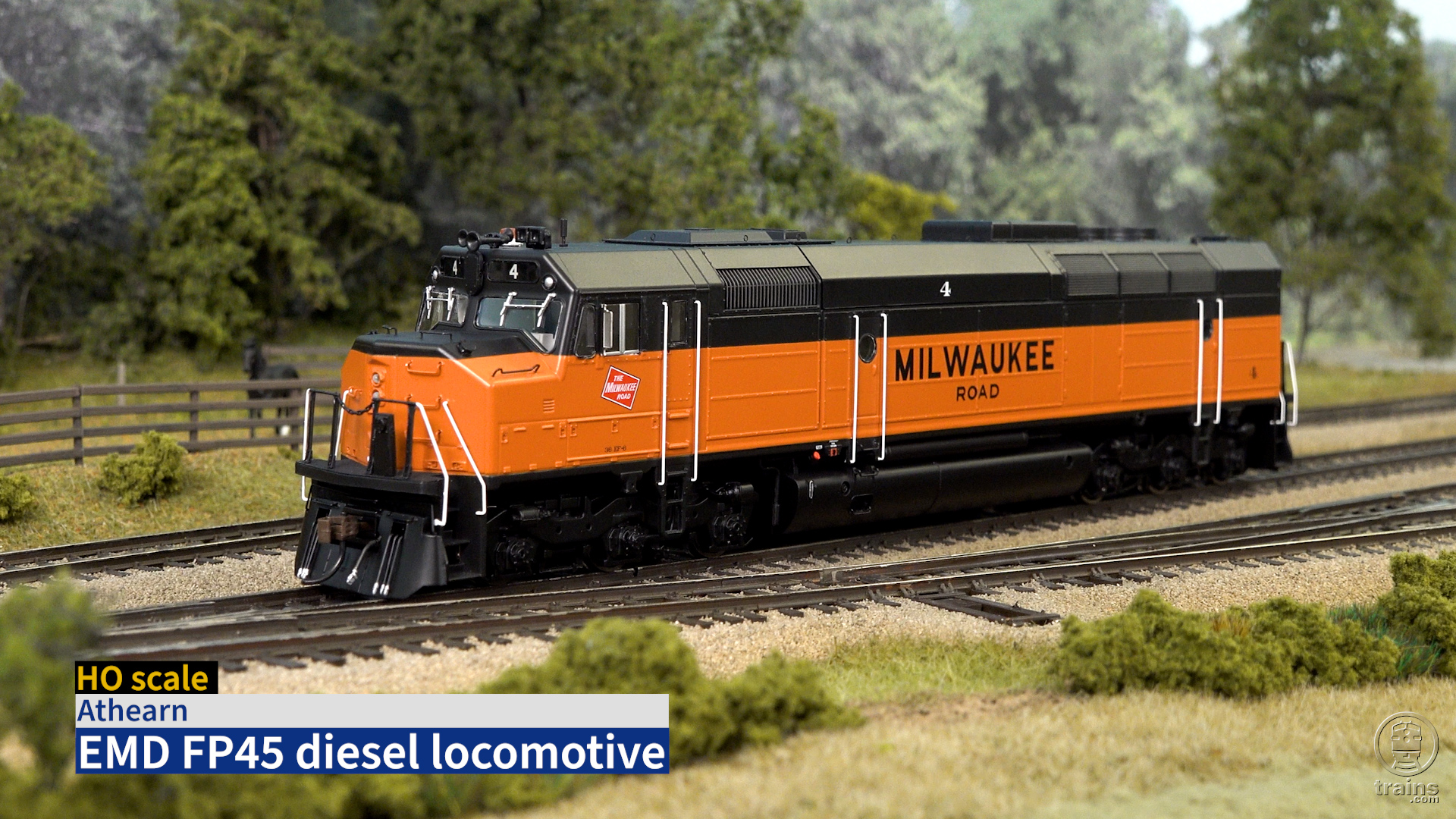For this review we used the Prodigy Wireless conversion set. This set includes one wireless throttle, a receiver, a short eight-wire command cable for recharging, and four rechargeable AAA NiMh batteries. The firm also sells a complete wireless package that includes a command base and a 3.5-amp power supply. Wireless throttles are also sold separately.
Converting an existing Prodigy Advance DCC system to wireless is extremely simple. To begin using the Prodigy Wireless throttle, I plugged the receiver, which is mounted to an eight-wire cable with a telephone-style jack on the end, into one of the command ports on the fascia of our WSOR layout and turned on the power switch on the side of the throttle. (When I tested the cab with the Prodigy Advance system in our workshop,
I plugged the receiver directly into the command base.) One receiver supports up to 32 Prodigy Advance Wireless throttles.
When installing the receiver under the layout, avoid placing it in a tangle of wires or near wire mesh used to support scenery. These items can cause interference between the throttle and the receiver.
Our sample has a range of about 100 feet, and the signal was able to travel through the steel-framed walls of the Kalmbach Publishing Co. building. This was confirmed by a fellow editor who stood near the layout while I sounded a locomotive’s horn from down the hall and around a corner.
The Prodigy Advance Wireless throttle is very user-friendly, especially if you’re familiar with other Prodigy Advance DCC products. The throttle has a similar button configuration and can perform all the same functions as the 28-function Prodigy Advance Squared tethered throttle. You can also switch between 14, 28, or 128 speed steps.
One new feature is the “Prog CV on Main” button, which makes it easier to adjust CVs while operating without the need for a dedicated programming track. I like being able to adjust certain effects on the fly, such as volume levels. This new button eliminates the need for multiple keystrokes, as on the tethered Prodigy Advance throttles, and makes programming on the main an even quicker task.
The “Save” button is another new function. Unlike Prodigy Advance tethered handhelds, the Prodigy wireless throttle won’t automatically save a locomotive to the recall stack when the power is shut off. If you want to keep a locomotive in your recall stack, you need to press “Save” after entering it before shutting off the power.
Like all Prodigy handhelds, the wireless cabs need to be assigned their own cab addresses. I set ours to address 4, since we already had three tethered cabs in use.
MRC eight-wire command cable. The Prodigy command base has to be turned on for the wireless throttle to recharge.
The throttle includes a “bat voltage” key, which when pressed will show the voltage level of the batteries. The maximum voltage level is 5.5 volts, and the throttle should be recharged any time the voltage drops below 4 volts.
According to the manufacturer, one hour of recharging time equals about one hour of operating time. However, I was able to leave our fully charged wireless throttle on for a full day, periodically running trains on the layout, before I had to recharge the unit.
Rechargeable batteries with a higher mAh rating can also be used. These batteries will have a longer battery life but require more time to recharge.
The manufacturer states that you can operate the throttle using four AAA alkaline (disposable) batteries. For safety and to avoid permanently damaging the throttle, you should never attempt to recharge alkaline batteries. This means that you should first remove the alkaline batteries from the Prodigy Advance Wireless throttle if you want to use it as a tethered throttle. You should also never mix alkaline and rechargeable batteries.
Price: $289.98 (conversion set)
$189.98 (throttle only)
$599.98 (with command base
and power supply)
Manufacturer
Model Rectifier Corp.
80 Newfield Ave.
Edison, NJ 08837
www.modelrectifier.com
Description: wireless Digital Command Control throttle
28 functions
128 speed steps
Battery voltage display
Built-in battery charger
Can be used with Prodigy
Advance, Prodigy Advance
Squared, and Prodigy
Express systems
Complete system includes
base unit and 3.5-amp
power supply
Four rechargeable 600 mAh
AAA NiMh batteries included
with each throttle
Recharging cord and receiver
included with conversion set
and complete system
Wireless and tethered throttles
can be used side by side















